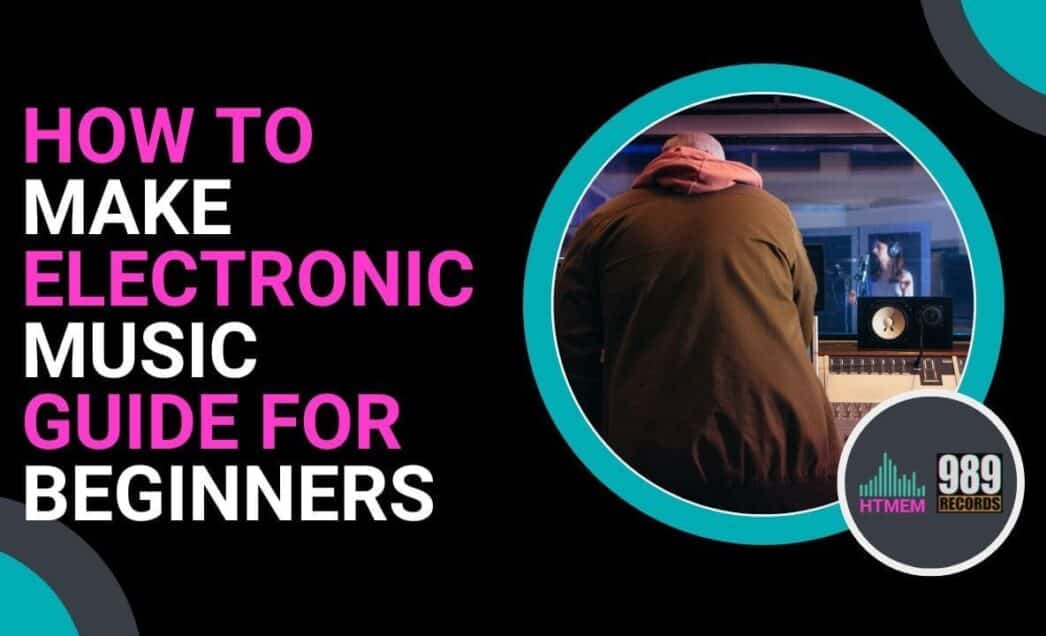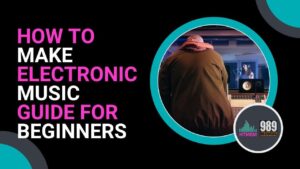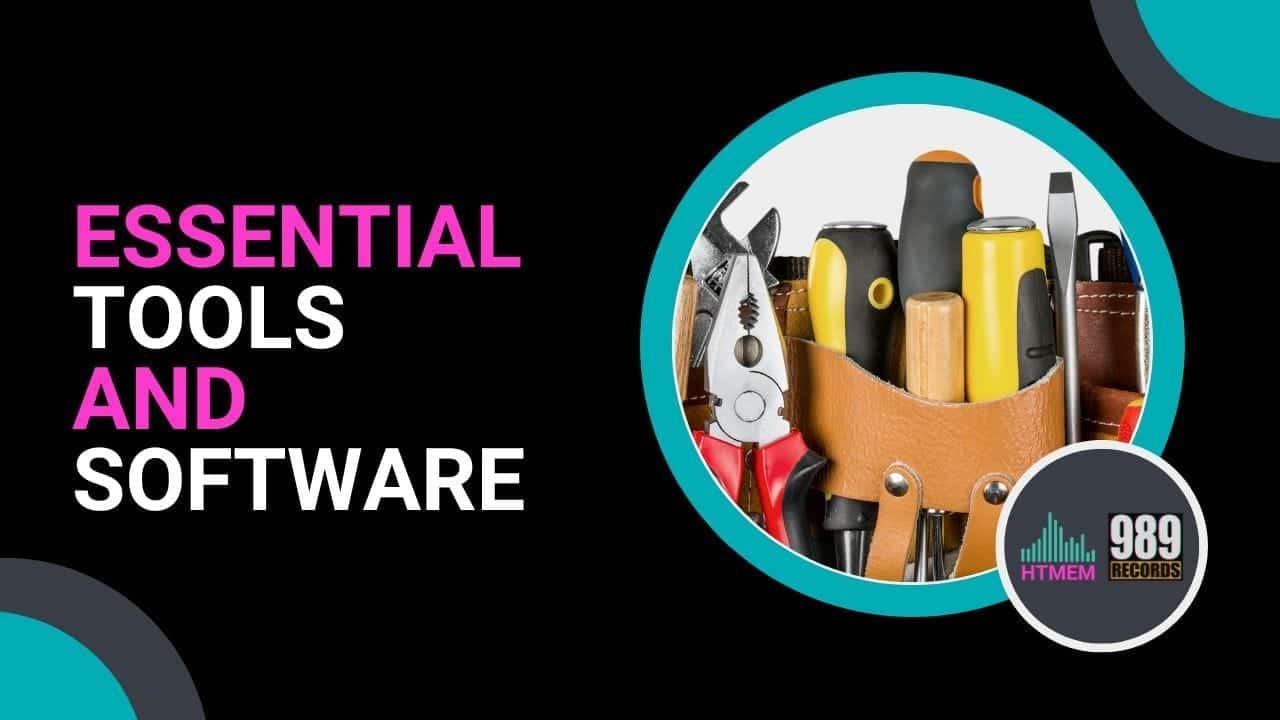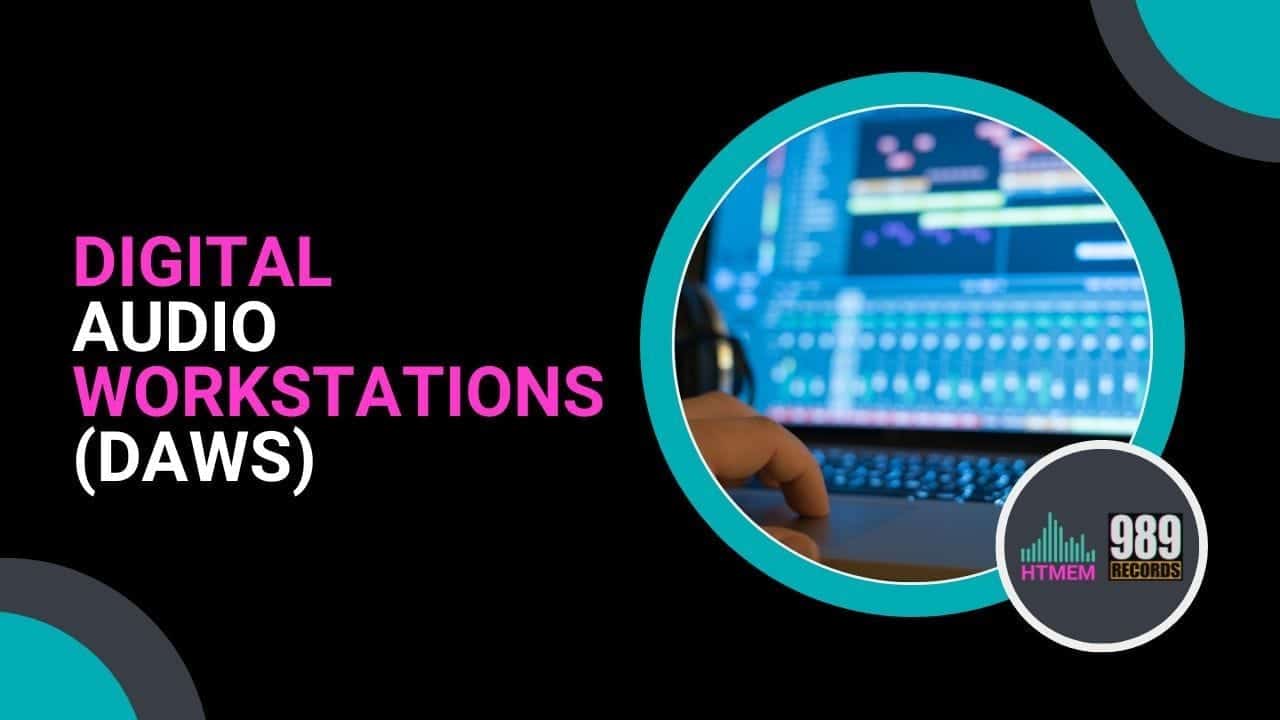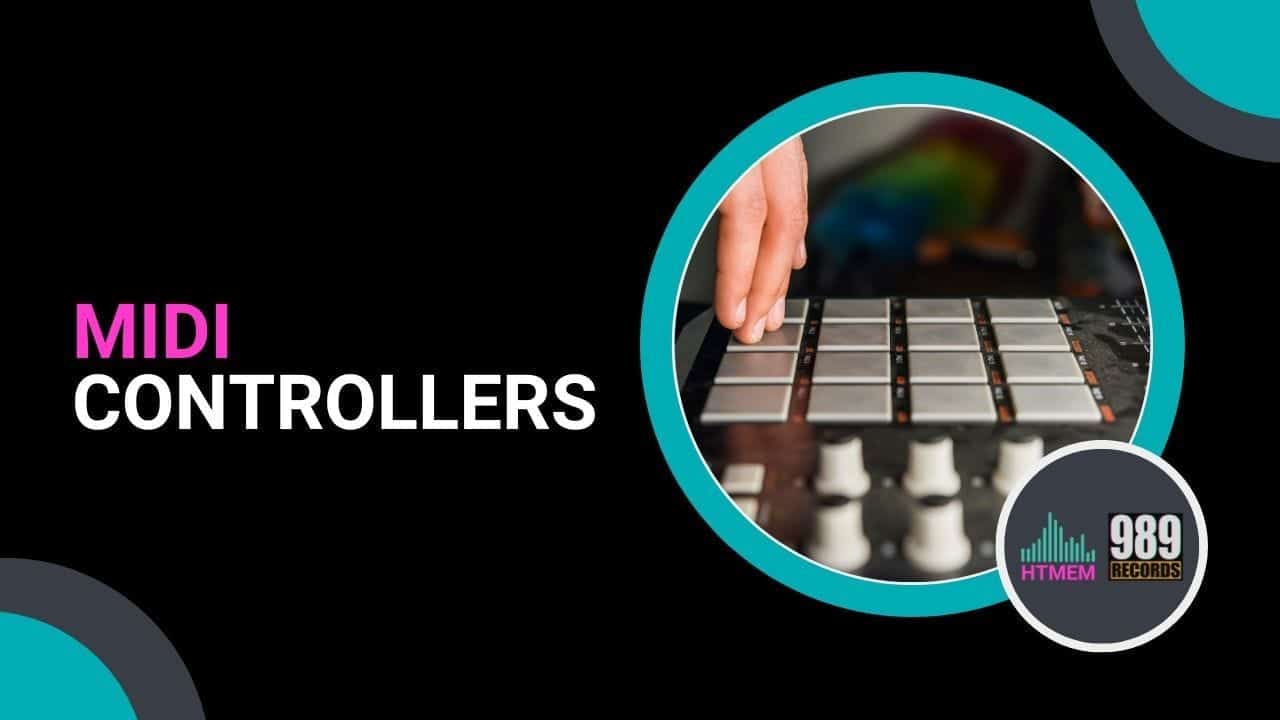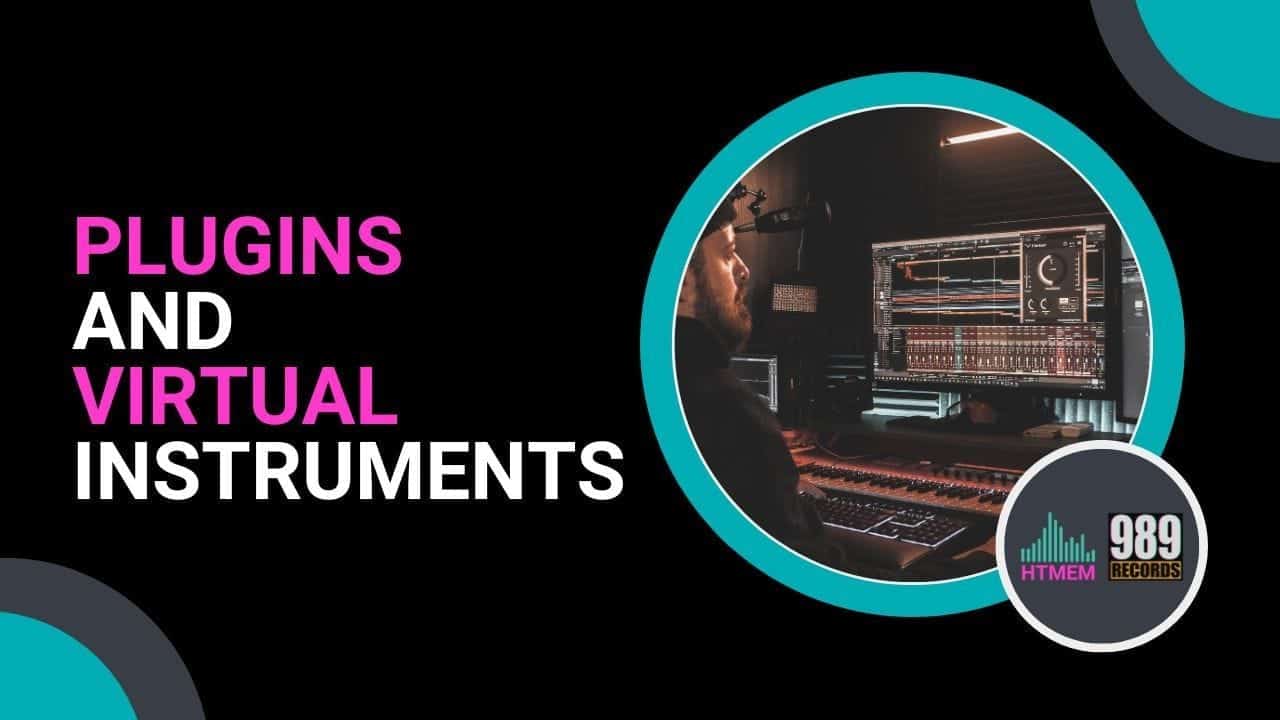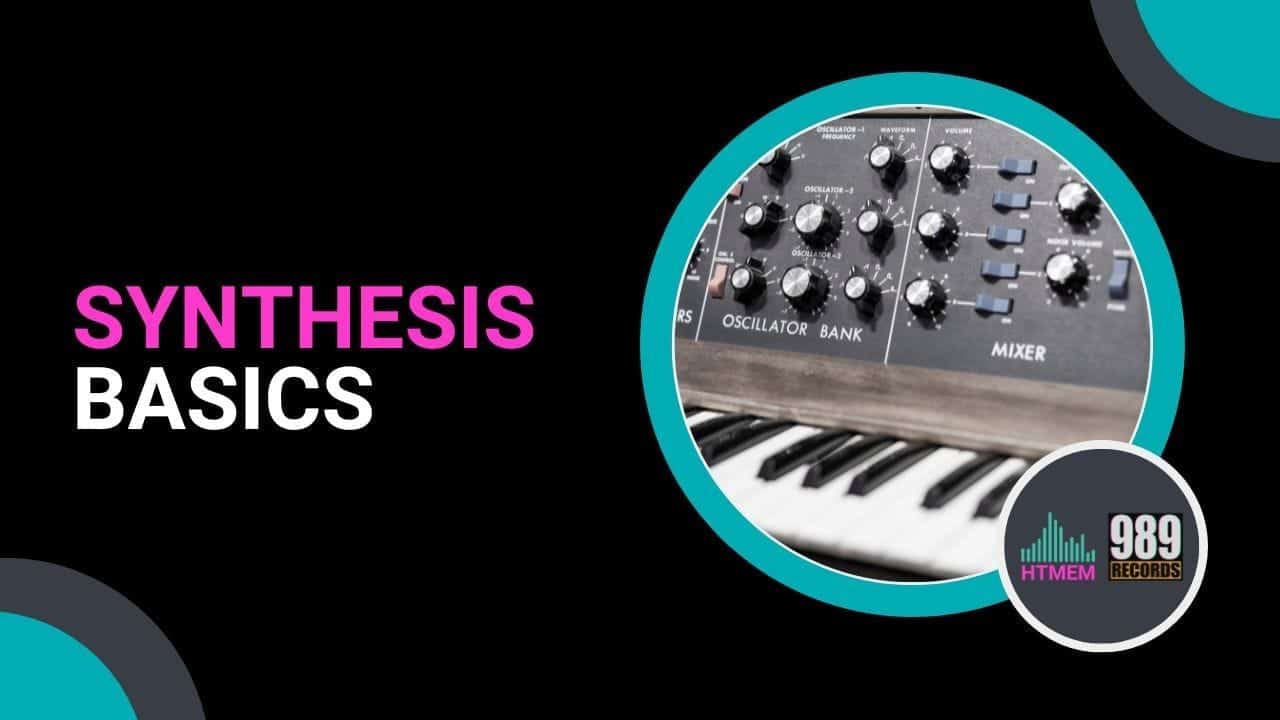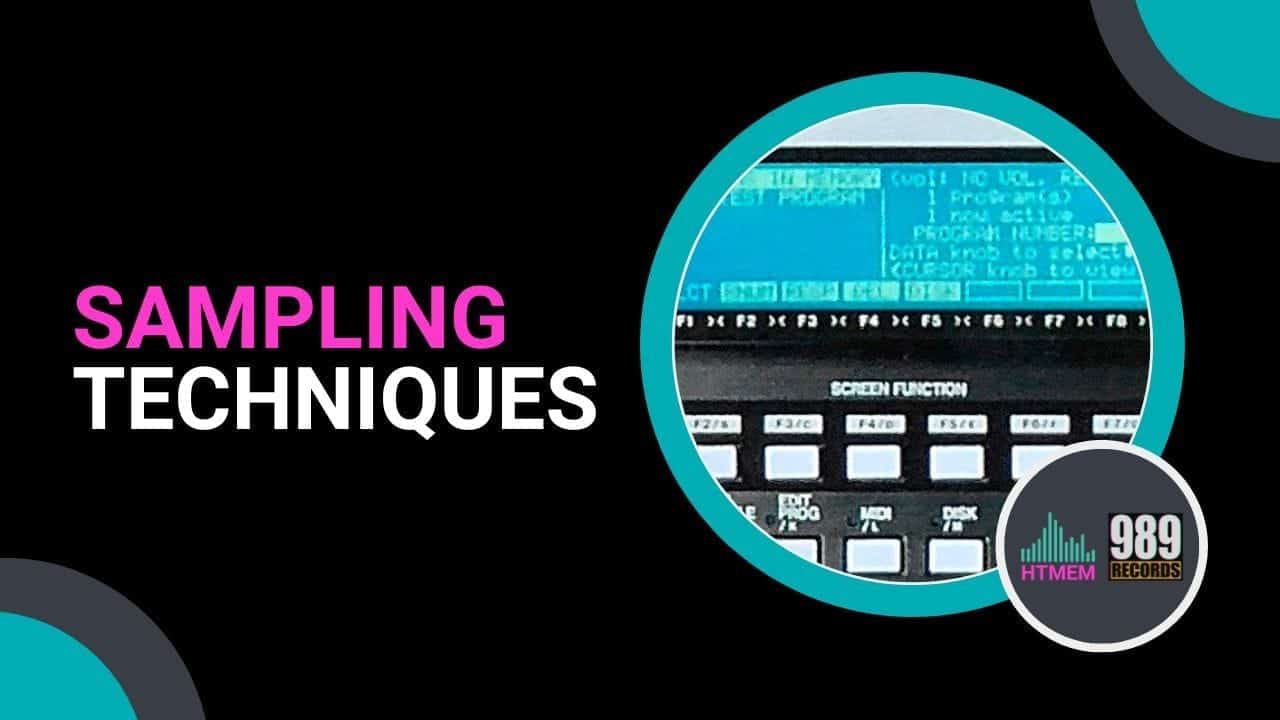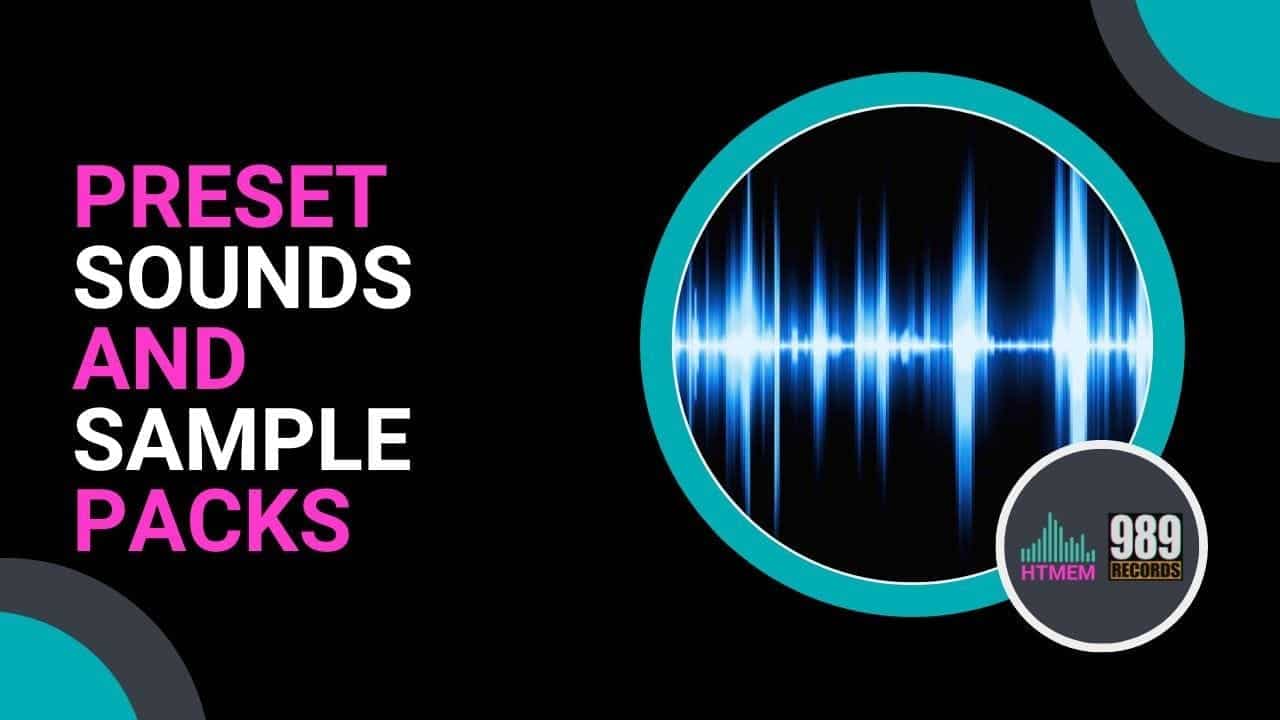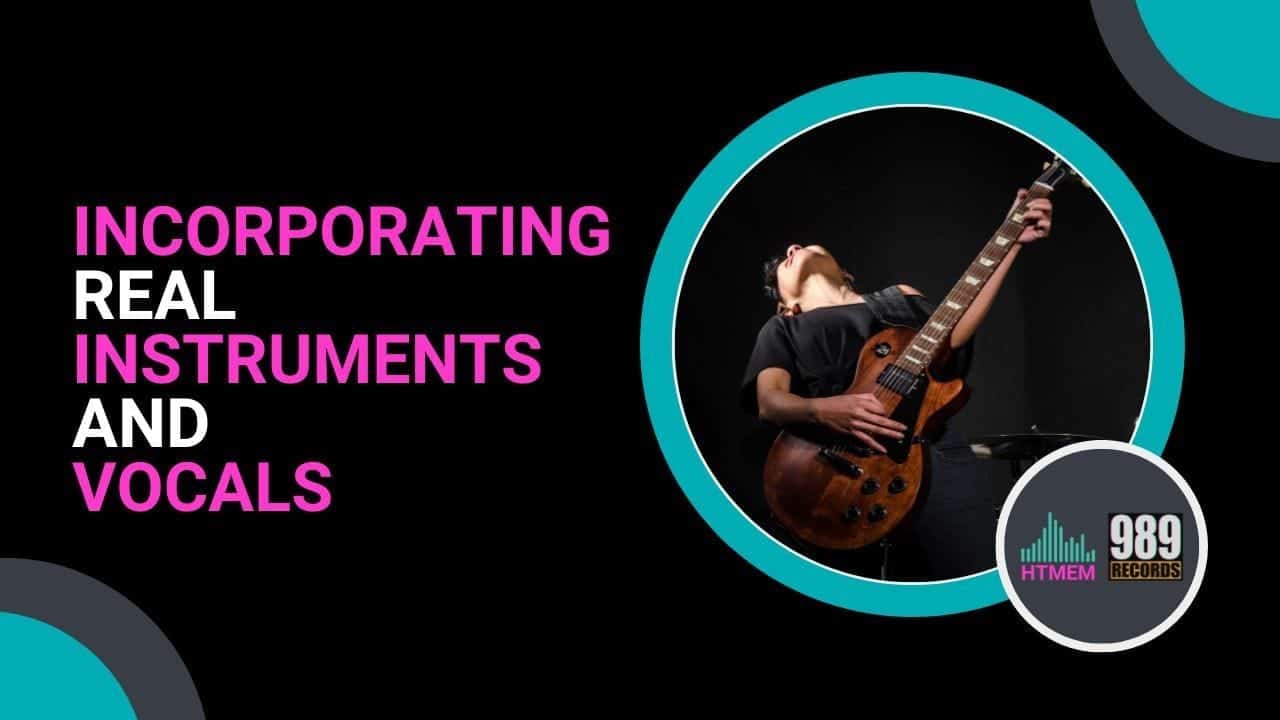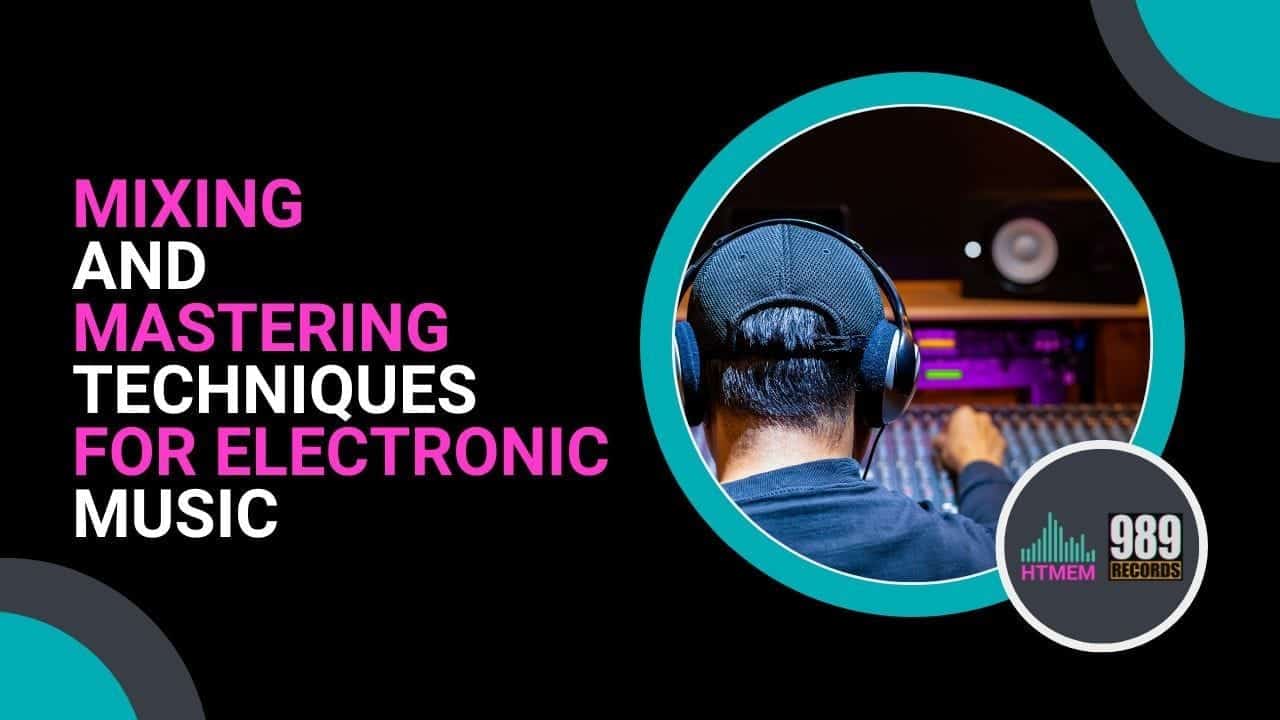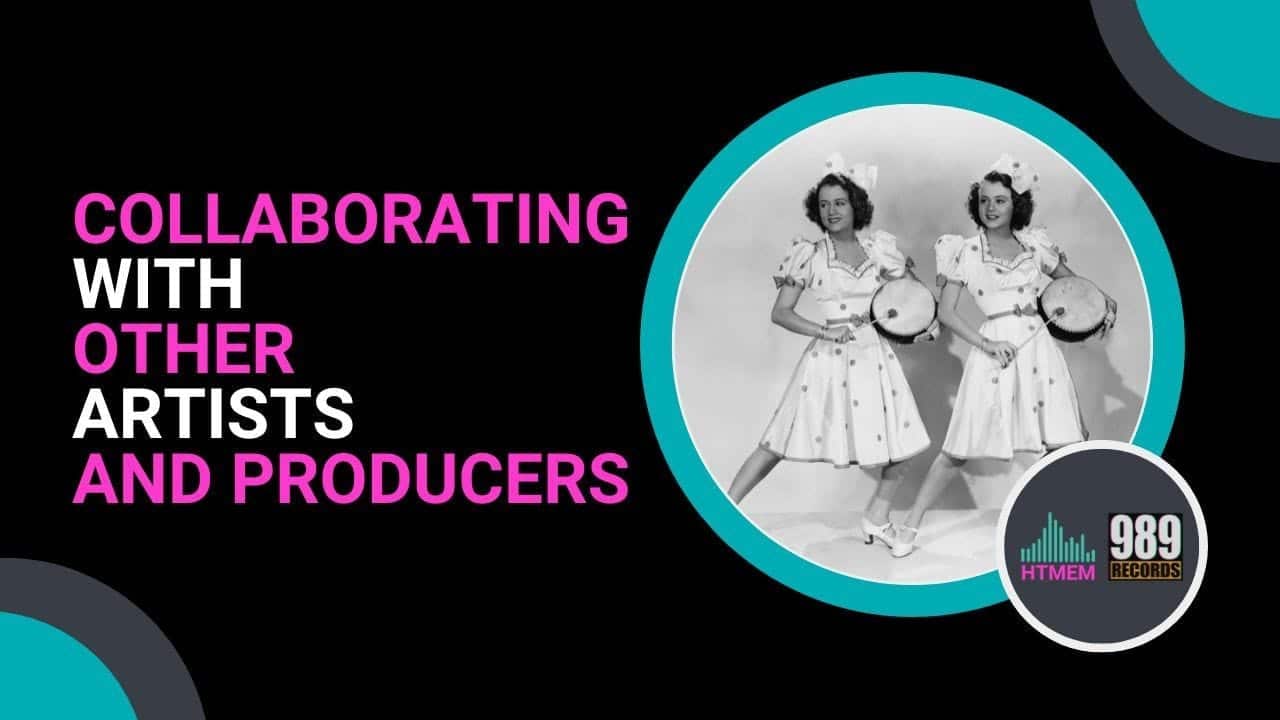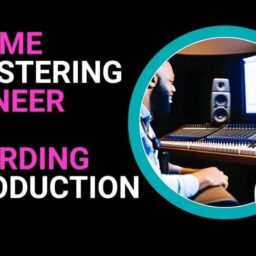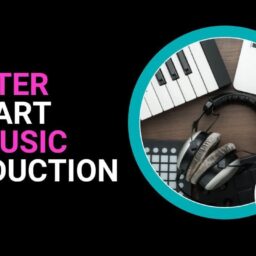Are you ready to start on an extraordinary journey into the world of Electronic Music Production?
No matter if you’re a complete beginner or an experienced producer looking to expand your knowledge, this comprehensive guide will provide you with valuable insights, tips, and techniques to help you learn electronic music production, create your own unique sound, and elevate your music to new heights.
Let’s dive in and explore the exciting realm of how to make electronic music production together!
Key Takeaways
- Explore the world of electronic music to find your niche and create a signature sound with essential tools & software.
- Learn the fundamentals of sound design, mixing/mastering techniques, and how to incorporate real instruments & vocals for captivating sounds.
- Network & promote yourself to build a successful career in electronic music production!
Definition and Brief History of Electronic Music
Electronic music is a genre that has revolutionized the music industry, characterized by its use of electronic instruments and technology. Its roots trace back to the early 20th century when the first electronic instruments were developed, paving the way for experimental music. However, it wasn’t until the 1970s and 1980s that electronic music truly began to flourish with the rise of genres like disco, techno, and house music.
The advent of digital audio workstations (DAWs) and synthesizers in the late 20th century further propelled the genre, allowing artists to explore new sonic landscapes and push creative boundaries. Today, electronic music encompasses a vast array of styles and sub-genres, from ambient and downtempo to the high-energy beats of electronic dance music (EDM). It is a staple in clubs, festivals, and concerts worldwide and is also prominently featured in film, television, and video game soundtracks.
Importance of Electronic Music Production in the Music Industry
Electronic music production is a cornerstone of the modern music industry. It involves the creation, arrangement, and refinement of sounds and musical ideas using electronic instruments and technology. Electronic music producers rely heavily on digital audio workstations (DAWs) to craft and record their music, often collaborating with other musicians, vocalists, and sound engineers to bring their visions to life.
The significance of electronic music production lies in its ability to generate unique and innovative sounds that can be used across various media. It provides artists with a platform to express their creativity and push the boundaries of traditional music. Moreover, electronic music production is a major revenue stream within the music industry, with many producers and artists achieving significant commercial success. The versatility and accessibility of electronic music production tools have democratized music creation, allowing a broader range of artists to contribute to the ever-evolving soundscape of the music industry.
Choosing Your Electronic Music Genre
Electronic music is a vast and diverse landscape with countless subgenres and styles to explore. From the hypnotic beats of house and techno to the high-energy soundscapes of electronic dance music (EDM), the possibilities are virtually limitless. Many successful producers started producing electronic music by exploring different genres and finding their unique sound.
In the realm of modern electronic music, finding your own niche and developing a signature sound is key to standing out as a budding music producer. One essential skill to master in this journey is mixing electronic music, which can elevate your tracks to new heights.
One way to do this is by immersing yourself in the world of electronic music. The creation phase of electronic music involves finding and preparing core musical ideas, such as melodies and drum sounds, which serve as the foundation for your tracks.
Here are some steps to get started:
- Listen to a wide variety of genres and artists to discover what resonates with you. Analyzing and deconstructing tracks from your favorite artists can provide valuable insights and help you learn new techniques to apply in your own work. This process allows new producers to understand the structure and elements of successful tracks.
- Don’t be afraid to experiment and push boundaries – after all, electronic music is all about innovation and breaking new ground.
- Grab your headphones, fire up your favorite music streaming service, and dive into the inspiring world of electronic music!
Remember, even the most successful producers started somewhere, and finding your own unique sound is the first step towards learning how to produce music and becoming a good music producer.
Essential Tools and Software for Electronic Music Production
Embarking on your journey to produce electronic music requires a set of tools and software to craft professional-sounding tracks.
These tools will enable you to record, edit, and mix your own electronic music, opening up a world of creative possibilities and allowing you to develop your unique sound.
In the process of making music, specifically making electronic music, you’ll gain valuable experience and skills that will serve you well in your career.
The upcoming sections will provide more detailed information about the essential tools and software ideal for beginners, including:
- Digital Audio Workstations (DAWs)
- Headphones and Studio Monitors
- MIDI Controllers
- Plugins and Virtual Instruments
Each of these components significantly contributes to the music production process, and understanding how they work together will empower you to create truly amazing electronic music.
Digital Audio Workstations (DAWs)
To make electronic music, you need at first a Digital Audio Workstation (DAW), which is the heart of any electronic music production setup. It’s the software that allows you to record, edit, and produce audio files, providing an intuitive and versatile platform for creating your music. Some of the most popular DAWs for electronic music production include Ableton Live, FL Studio, and Logic Pro. Logic Pro is a premier DAW used by many famous electronic musicians to create their hit tracks. Ableton Live is known for its clean interface and intuitive workflow, particularly for live performances.
Each of these programs offers a unique set of features and capabilities, thus, you should choose one that aligns with your needs and workflow. FL Studio is widely used by beginners and pros alike, known for being beginner-friendly.
The key features of a DAW that make it so powerful include the arrange window, mixer section, and instrument browser, which allow you to create music with ease and precision. Most DAWs allow for extensive sound manipulation through plugins, which can be instruments or effects. Plugins are required in a DAW to add new sounds and effects to your productions. By mastering these functions, you can unlock your creative potential and develop your skills as an electronic music producer.
Additionally, selecting the right DAW can significantly improve your workflow and provide you with the features necessary for creating top-notch electronic music.
Still Undecided on what DAW to use?
Check Our Steinberg Cubase Course.
As you become more comfortable with your chosen DAW, you’ll discover a wealth of additional tools and plugins that can help elevate your music even further.
Some examples include:
- Virtual instruments
- Effects
- Advanced audio editing tools
- Automation features
The possibilities for creative exploration and experimentation are virtually limitless.
So don’t be afraid to dive in and start exploring all that your DAW has to offer!
Headphones and Studio Monitors
Precise sound monitoring and mixing when producing music require quality headphones and studio monitors. Good quality headphones are important to avoid distortion when mixing music. These tools enable you to hear your music accurately, ensuring that your mixes translate well across different sound systems and devices.
Studio monitor speakers are specially designed for audio production, providing a flat, neutral sound that allows you to hear your music as accurately as possible. A popular choice among music producers is the Yamaha HS5 Powered Studio Monitors.
In addition to studio monitors, a good pair of studio headphones, such as the Audio-Technica ATH-M50x, can provide an accurate listening environment for when you’re working in a less-than-ideal acoustic space or need to keep the noise levels down.
Keep in mind that investing in high-quality headphones and studio monitors is just a part of the whole process. To get the most out of your music production setup, you’ll also need an acoustically treated room and an audio interface to ensure accurate sound reproduction and monitoring.
With the right tools and environment in place, you’ll be well on your way to creating professional-sounding electronic music.
MIDI Controllers
Any electronic music production setup would be incomplete without MIDI controllers. These hardware devices allow you to control and play virtual instruments within your DAW, providing a tactile, hands-on experience that can help enhance your creativity and workflow. Audio interfaces are also essential as they are used to connect microphones and instruments to a computer for recording.
One popular type of MIDI controller is the MIDI keyboard, which allows you to easily input and record notes into your DAW, making it an invaluable tool for composing melodies, chords, and basslines.
In addition to MIDI keyboards, there are a variety of other MIDI controllers available, such as drum pads, control surfaces, and even wind instruments. These devices can be used to control various aspects of your DAW, such as triggering samples, adjusting parameters, and automating effects. By incorporating MIDI controllers into your setup, you can take your production workflow and creative possibilities to the next level without spending a fortune.
Considering your specific needs and preferences is crucial when choosing a MIDI controller. Do you need a full-sized keyboard with weighted keys, or would a compact, portable controller be more suitable for your setup? Additionally, consider the available features and connectivity options, such as USB or Bluetooth, to ensure that your new controller integrates seamlessly with your existing gear.
With the right MIDI controller in place, you’ll be well on your way to creating captivating electronic music.
Interested in learning more about MIDI? Be sure to check out our YouTube videos on our Channel.
Plugins and Virtual Instruments
For any electronic music producer, plugins and virtual instruments are indispensable, as they allow you to expand your sonic palette and create unique, captivating sounds.
Some popular options include:
From powerful software synthesizers to versatile samplers and drum machines, there’s a wealth of options available to help you craft the perfect sound for your music.
In addition to sound-generating plugins, you’ll also want to explore the world of effect plugins, which can be used to process and manipulate your audio in countless creative ways.
Some popular effects plugins include:
- Distortion
- Filtering
- Equalization
- Compression
- Delay
- Reverb
- Tremolo
- Chorus
- Flanger
- Phaser
By combining these plugins in various ways, you can create a virtually infinite array of unique sounds and textures to enhance your electronic music production.
Maintaining an organized and up-to-date library is crucial as you build your collection of plugins and virtual instruments. Many DAWs (like Cubase) offer built-in plugin management tools that can help you categorize and sort your plugins, making it easier to find the perfect sound when inspiration strikes. By staying organized and continually exploring new tools and techniques, you’ll be well-equipped to create truly innovative and captivating electronic music. Focusing on the quantity of projects can lead to faster improvement than prioritizing quality, as it helps you develop essential production habits and skills. Finishing music projects is a key part of this process, as it reinforces these habits and builds confidence in your abilities.
Fundamentals of Sound Design
Sound design is a crucial aspect of electronic music production, as it allows you to create unique and captivating sonic landscapes that set your music apart from the rest. Exploring the fundamentals of sound design, including synthesis, sampling, and the use of presets and sample libraries, can open up a world of creative possibilities and aid in developing your own signature sound.
Whether you’re crafting intricate melodies and harmonies or designing powerful basslines and beats, a solid understanding of sound design principles will enable you to create professional-sounding electronic music that resonates with your audience.
The upcoming sections will delve into the basics of sound design, equipping you with the knowledge and skills necessary to produce captivating and innovative electronic music.
Synthesis Basics
Synthesis is the process of creating sound electronically using a synthesizer. A synthesizer is a device or software that generates audio signals by combining various components, such as oscillators, which produce sound waves, filters, envelope controls, and LFOs.
- Oscillators
- Filters
- Envelope controls
- LFOs
Understanding the principles of synthesis and how to create unique sounds using synthesizers is a cornerstone of sound design for electronic music production. This includes mastering oscillators, filters, and envelopes, which are crucial for crafting distinctive sounds.
There are several types of synthesis methods, each offering its own unique possibilities for sound creation. Some common synthesis methods include subtractive synthesis, wavetable synthesis, and granular synthesis. By exploring these different methods and experimenting with various synthesizer parameters, you can craft a diverse array of sounds and textures that will add depth and character to your electronic music productions. To create a unique sound, producers are encouraged to experiment with different genres, blending elements to craft something truly original.
In addition to standalone synthesizers, many DAWs come with built-in software synthesizers that offer a wide range of sound generation capabilities. These soft synths often include a variety of filters, effects, and modulation options, allowing you to create complex and evolving sounds with ease. Mastering the basics of synthesis and experimenting with various synthesizer settings sets you on the path to producing unique and captivating electronic music.
Sampling Techniques
Sampling is another essential aspect of sound design for electronic music production. It involves recording, editing, and manipulating audio samples to create new sounds and textures. Samplers, which can be hardware devices or software instruments, allow you to import and process audio samples, giving you the ability to create unique and interesting sounds that can be used in your music.
There are numerous ways to manipulate audio samples in a sampler, such as pitch shifting, time stretching, and adding effects. By experimenting with these different techniques, you can create a wide variety of sounds and textures, from lush pads and atmospheric soundscapes to punchy drum loops and intricate melodic sequences. Additionally, incorporating samples from various sources, such as recordings of real instruments, found sounds, and pre-recorded sample libraries, can add depth and character to your electronic music productions.
Being mindful of copyright laws and obtaining the necessary permissions to use any audio material in your music is crucial when working with samples. By using royalty-free sample libraries or creating your own original recordings, you can avoid potential legal issues and focus on crafting unique and captivating electronic music.
Using Presets and Sample Libraries
Presets and sample libraries are valuable resources for electronic music producers, providing a wealth of pre-made sounds and samples that can be used to enhance your music production. Presets are pre-configured settings that can be applied to software instruments or effect plugins, allowing you to quickly and easily achieve the desired sound without having to manually adjust individual parameters. Sample libraries, on the other hand, are collections of audio samples, such as drum hits, instrument sounds, and sound effects, that can be used to add depth and texture to your music.
Using presets and sample libraries can help streamline your workflow and allow you to focus on the creative aspects of music production. By starting with a preset or sample as a foundation, you can save time and effort while still having the flexibility to customize and tweak the sound to suit your needs. Additionally, presets and sample libraries can be a great source of inspiration, providing you with new ideas and starting points for your own sound design explorations.
Remember, presets and sample libraries are merely one of the tools in your sound design arsenal. While they can provide a quick and efficient way to achieve a specific sound or texture, it’s also essential to develop your own sound design skills and experiment with different techniques to create truly unique and innovative electronic music. By combining the use of presets and sample libraries with your own original sound design, you’ll be able to craft captivating and memorable electronic music that stands out from the crowd.
The Role of Music Theory in Electronic Music
Although music theory may initially appear daunting, it is vital in comprehending the structure and emotional impact of electronic music. By studying music theory, you’ll gain a deeper understanding of chords, note intervals, and melodic progressions, enabling you to create more compelling and engaging music. Additionally, a strong foundation in music theory can help you communicate more effectively with other musicians and producers, making collaboration a much smoother and more enjoyable process.
While learning music theory may not be the most exciting aspect of electronic music production, it’s an investment that will pay dividends in the long run. By taking the time to study and understand the fundamental concepts, you’ll be better equipped to create captivating melodies, rich harmonies, and powerful basslines that resonate with your audience. So, whether you’re a complete beginner or an experienced producer looking to expand your knowledge, don’t underestimate the importance of music theory in electronic music production.
Steinberg Cubase software empowers you to compose music effortlessly, even without prior music theory knowledge. With its advanced algorithm, it guides you in creating music with precise tonality.
Isn’t that amazing?
Start on your Cubase learning journey today.
Song Structure and Arrangement
Song structure and arrangement are fundamental aspects of electronic music production. A well-structured song typically consists of several key sections: the intro, build-up, drop, and outro. The intro sets the stage, introducing the main theme or melody and establishing the mood. The build-up creates tension and anticipation, leading to the drop, which is the song’s climax and often the most energetic part. The outro provides a satisfying conclusion, often revisiting the main theme or melody.
Electronic music producers use various techniques to craft compelling song structures and arrangements. Repetition, variation, and contrast are essential tools for maintaining listener interest and creating dynamic tracks. Additionally, audio effects like reverb and delay can add depth and space, enhancing the overall listening experience. By mastering these techniques, producers can create engaging and memorable electronic music that resonates with their audience.
Writing a Drum Beat and Creating a Bass Line
Writing a drum beat and creating a bass line are crucial components of electronic music production. The drum beat provides the rhythmic foundation, while the bass line adds depth and groove. Producers often use drum machines and virtual instruments to craft these elements.
To write a drum beat, start by creating a basic pattern using a drum machine or virtual instrument. Experiment with different rhythms and patterns to develop a unique and compelling beat. For the bass line, use a virtual instrument or synthesizer to generate a low-frequency sound that complements the drum beat. The bass line should enhance the rhythm and add a layer of complexity to the track.
By focusing on these foundational elements, electronic music producers can create tracks that are both rhythmically engaging and sonically rich.
Incorporating Real Instruments and Vocals
While electronic music is often characterized by its use of synthesized sounds and digital processing, incorporating real instruments and vocals can add a unique and organic quality to your music that sets it apart from the rest.
Some ways to blend real instruments and vocals with electronic elements include:
- Adding lush string arrangements
- Incorporating powerful vocal hooks
- Experimenting with live drums or percussion
- Recording acoustic guitar or piano parts
- Using real brass or woodwind instruments
By blending these elements, you can create a dynamic and engaging sonic landscape that appeals to a wide range of listeners.
A solid understanding of recording techniques and audio editing is key to successfully incorporating real instruments and vocals into your electronic music production. This includes learning how to properly mic and record different instruments and vocals, as well as how to edit and process the recorded audio to blend seamlessly with your electronic elements.
Mixing and Mastering Techniques for Electronic Music
As the final stages in the electronic music production process, mixing and mastering are critical to ensuring your music boasts a polished and professional sound. Mixing involves balancing the levels, panning, and effects (like reverbs, delay, chorus, etc.) of each track in your project to create a balanced and cohesive sound, while mastering polishes the final mix, ensuring it sounds great on all playback systems. A solid drum beat acts as the foundation and establishes the overall energy of a track during mixing. Mixing also involves creating spatial depth, which enhances the overall listening experience. A common trick in dance music is an extended snare roll, which builds progressively in intensity, adding excitement and anticipation to the track.
By developing a strong understanding of mixing and mastering techniques, you’ll be able to create electronic music that sounds punchy, clear, and engaging on a wide range of listening systems. This includes learning how to:
- Properly set levels
- Use EQ and [LINK 1]
- Apply creative effects to enhance your tracks
- Create a captivating sonic experience for your listeners
Most electronic music genres employ unique mixing techniques specific to their style, so understanding these nuances can further refine your production skills.
- Properly set levels
- Use EQ and compression
- Apply creative effects to enhance your tracks
- Create a captivating sonic experience for your listeners
With the right skills and techniques in place, you’ll be well on your way to producing electronic music that is professional-sounding and stands out from the crowd.
As you start producing electronic music, remember to keep refining your craft and stay up-to-date with the latest trends and technologies. Producers are increasingly taking control of the entire mixing and mastering process themselves, which allows for greater creative control and a more personalized sound.
Collaborating with Other Artists and Producers
Working together with other artists and producers can offer an incredibly rewarding experience, providing you with the opportunity to learn new techniques, gain exposure, and create truly unique music.
By working together, you can combine your individual strengths and perspectives to push creative boundaries and develop innovative electronic music that resonates with your audience.
Effective collaboration demands:
- Strong communication skills
- Openness to feedback and fresh ideas
- Being clear and concise in your messages
- Being respectful of your collaborators’ time and opinions
- Being willing to compromise and adapt when necessary.
By cultivating a positive and open-minded attitude towards collaboration, you’ll be able to forge valuable connections with other artists and producers and expand your creative horizons in the process.
Collaborating with other electronic music producers can be immensely beneficial. It opens up opportunities for creativity, learning, and growth. By joining forces, you tap into a collective pool of knowledge and skills, fostering innovation and pushing artistic boundaries.
Don’t miss out on the incredible potential that collaboration holds in the world of electronic music production.
Join our community of producers and audio enthusiasts by registering for free! Experience a vibrant hub where creativity thrives and like-minded individuals gather.
So, connect, collaborate, share, and cultivate your passion for all things audio.
Staying Inspired and Motivated
Keeping inspired and motivated is paramount for any creative process, including electronic music production. Maintaining a positive mindset and a strong work ethic will help you to overcome challenges and continue to grow as an artist.
There are several strategies you can employ to keep your inspiration and motivation levels high, such as listening to other genres of music, attending live shows, and collaborating with other artists and producers.
Another important aspect of staying inspired and motivated is setting achievable goals and celebrating your accomplishments. By breaking down your larger objectives into smaller, manageable tasks, you can maintain a sense of progress and momentum throughout your electronic music production journey.
Additionally, taking breaks to refresh your mind and rewarding yourself for reaching milestones can help keep you on track and maintain your enthusiasm for creating amazing electronic music.
Building Your Brand as an Electronic Music Producer
To establish a successful career in the industry, it is crucial to develop a unique brand and online presence as an electronic music producer. This includes:
- Creating a distinctive logo
- Building an engaging website
- Maintaining a vibrant social media presence that reflects your artistic identity and helps to connect with your audience
By effectively promoting your music and showcasing your unique style, you’ll be able to attract a loyal fanbase and gain recognition within the electronic music community.
Building your brand as an electronic music producer also involves networking and promoting your music.
Networking and Promoting Your Music
To build a successful career in electronic music, networking and promoting your music are essential steps. By connecting with other artists, producers, and industry professionals, you can expand your network, gain exposure, and create opportunities for collaboration and growth. Again, some strategies for effective networking include attending music events, participating in online communities, and engaging with your audience on social media.
Promoting your music is equally important as it helps to build your fanbase and establish your presence within the electronic music community. By leveraging social media, submitting your music to online platforms, and playing live shows, you can increase your visibility and attract new listeners.
Remember, the more you put yourself out there and share your music, the more opportunities you’ll create for success in the world of electronic music production. Joining online communities and forums can provide support and feedback for new producers, helping you refine your skills and grow as an artist.
Join a thriving community of electronic music enthusiasts. Sign up today and be a part of our passionate community that is constantly growing.
Summary
Throughout this comprehensive guide, we’ve explored the exciting world of electronic music production, covering essential tools and software, sound design fundamentals, music theory, incorporating real instruments and vocals, mixing and mastering techniques, collaboration, staying inspired, and building your brand. Analyzing tracks from favorite artists can enhance your understanding of production techniques, providing a solid foundation for your creative journey. By deconstructing these tracks, producers can learn new techniques and apply them in their own work, further enriching their skills.
Armed with this knowledge, you’re now better equipped to embark on your own electronic music production journey and create captivating, innovative music that resonates with your audience.
So, don’t wait any longer – dive in, explore your creative potential, and share your passion for electronic music with the world!
Check Our Courses Here.
Frequently Asked Questions
How do you make electronic music?
To make electronic music, you need a PC or laptop, a DAW to record notes, and special software to edit them. To complete your setup, you’ll require headphones, audio monitors, an audio card, and ideally, a synthesizer and/or a sampler to create unique sounds. Essential equipment for beginners includes a computer, DAW, headphones, and MIDI controllers. With this combination of tools, you can create your own digital masterpieces.
Is producing electronic music hard?
Producing electronic music is a challenge, particularly for beginners, as there can be a large disconnect between the envisioned track and its final product.
But don’t worry! With HTMEM Academy, you can kickstart your music production career on the right path. Accessible resources include YouTube videos, online courses, blogs, and articles focused on electronic music production. Courses that specialize in EDM production are excellent for helping you learn genre-specific techniques. Participating in workshops or masterclasses offers intensive learning experiences in electronic music production, providing hands-on guidance and expert insights. Experience the perfect way to begin your journey with our courses.
What are some essential tools and software for electronic music production?
Creating great electronic music requires powerful tools and software, such as a DAW, quality headphones and studio monitors, MIDI controllers, plugins, and virtual instruments. All are essential for crafting professional-level tracks.
What is the role of music theory in electronic music production?
Music theory is essential for creating effective and emotive electronic music, as well as for establishing effective communication with other musicians and producers.
Except for Steinberg Cubase, which enables you to compose music even without any knowledge of music theory.
How can I incorporate real instruments and vocals into my electronic music?
And create some real Organic House Music? Yep! You need to gain a better understanding of recording and editing, and you’ll be able to seamlessly blend real instruments and vocals into your electronic music to create dynamic and unique sounds.
Curious to Learn More?
Also Check: Beginner’s Guide: Everything you Need to Know About the Production of Music
Now Practice and Enjoy!

